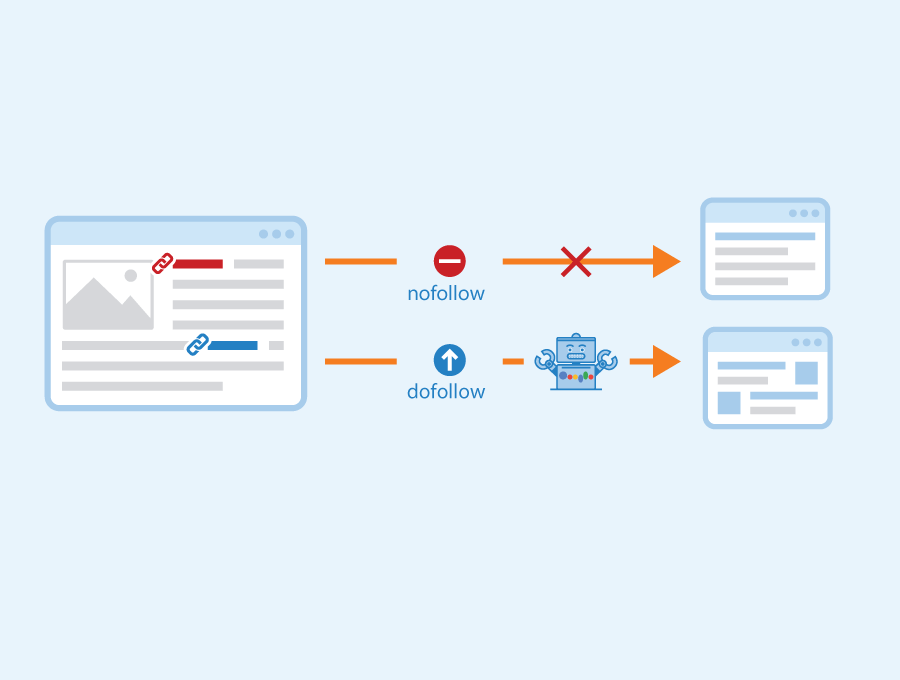
Do you know which is the most important ranking signal in SEO?
It’s inbound links or Backlinks!
Considering you have done substantial keyword research, written valuable and relevant content, and done your on-page optimization, you will also need to do some off-site work.
It’s called off-page SEO. These are the activities you do outside your website to increase the authority of your website. To tell people that what you write is credible.
Off-page SEO majorly constitutes link building. You gain authority from other websites by getting links from them to your website. This transfer of authority from one website to another is called link juice.
It so happened that SEO players began fouling in the game by misusing the backlink facility.
You know that, when it comes to malpractices, Google is a strict police!
Google introduced the nofollow link attribute to help people avoid or eliminate these foul players from their websites. And all those links that are not nofollow were called dofollow links.
What are dofollow and nofollow links in SEO? How different are they from regular links? Do they affect SEO? How do you know when to use dofollow or nofollow links?
Let us understand the answer to each of these questions in this article.
What is a dofollow link in SEO?

A dofollow link is a backlink that allows link juices to flow from one website to another. It is a hyperlink on another website that points to your website or blog. That way, you are getting your website voted on by other websites.
Getting a vote from high-authority websites helps you improve your ranking.
An HTML code for the dofollow link is written as shown below.

In the above example of a dofollow link:
- <a> is called a link tag or anchor element tag, which contains the URL and the anchor text describing it.
- Href is a link attribute. It specifies the link or URL.
How to make dofollow links?
Making a dofollow link is the same as making a backlink. You select the anchor text you want to use for the link and add a hyperlink to it.
The link is, by default, dofollow. No coding is required here unless you want to remove a previously added no follow attribute. But let’s talk about that later.
The different types of do-follow links can be found in:
- Guest posts
- Acknowledgments
- Reviews
- Testimonials
- Resources
Dofollow links helps search engines crawl, and webmasters get authority from other websites.
You must be thinking that this looks like any other link.
You are right.
It is a regular link. The term dofollow actually comes up only when you are talking about no follow links.
What is nofollow link in SEO?
A no follow link is a link attribute used by websites to tell the search engine that they don’t want to endorse the linked site. It’s a hint given to the search engine that they do not want to give any credit to that link.
No follow links are like taps that do not allow link juice to flow.
The HTML code for the nofollow link looks as written below:
<a rel=”nofollow” href=”https://sanjayshenoy.com”>Sanjay Shenoy </a>
The only difference here is that there is a rel attribute that defines the relationship between the current page and the linked page. Nofollow is the value assigned to the attribute to hint to the search engine that the link should not be followed/crawled.
How to add nofollow links to your webpages?
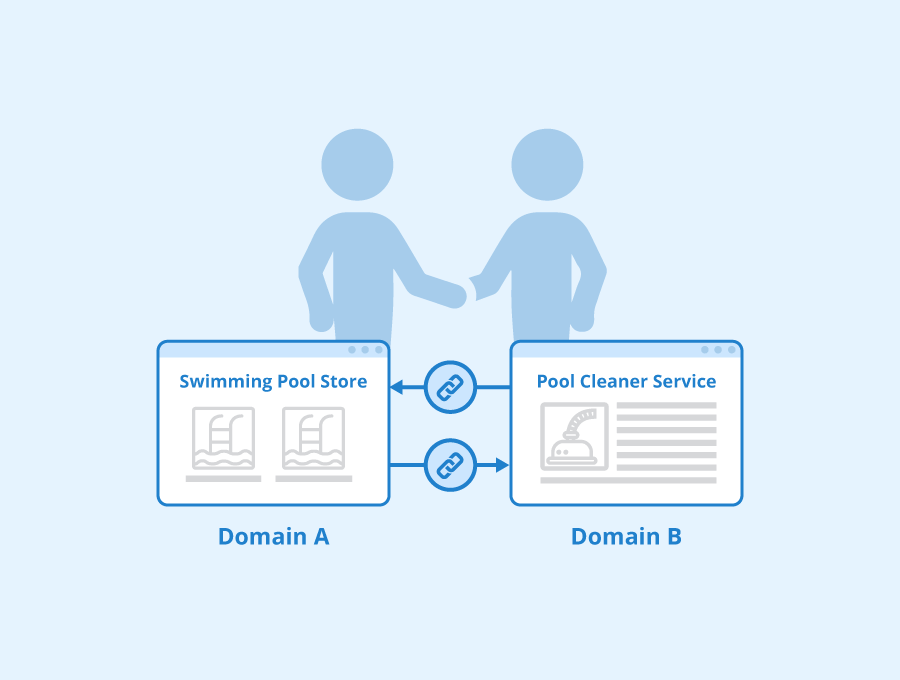
To mark a link as nofollow, the link needs the rel=”nofollow” attribute in the anchor tag. If you do not know coding, you don’t have to.
There are plugins link Rank Math and Yoast SEO which you can use to assign the attribute you like.
When you are adding the hyperlink to the selected text, you get a drop-down menu with the nofollow and dofollow options.
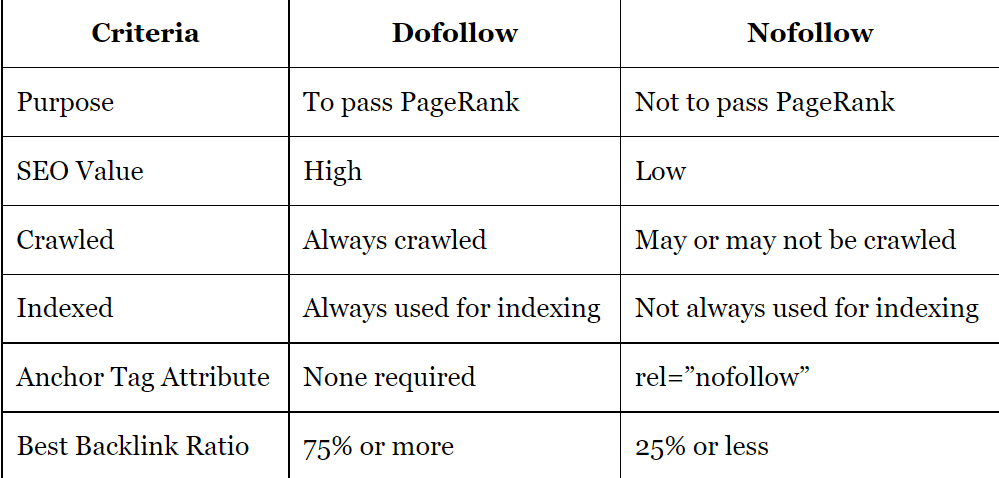
How dofollow links affect SEO?
Dofollow links are essential for both search engines and webmasters. They play a vital role in the SEO strategy for building backlinks. They help to improve the PageRank of web pages and websites.
Benefits of Dofollow backlinks:
- They pass the PageRank of the original site to the linked site.
- They increase your website’s authority.
- The higher the quality of links, the better the web page ranks in search results.
- They help a web page rank higher for the target keywords.
- They act as trust signals for search engines.
- Search engines can discover your content faster for indexing and ranking using dofollow links.
Do nofollow links help SEO?
If a nofollow link does not allow link juices to flow and prevent search engines from crawling the linked sites, what is the use?
A nofollow link is still a link that takes the user from one. It is just a hint to the search engine but not a directive.
There must be a healthy backlink diversity of nofollow and dofollow links in a website. If a page is filled with dofollow links, Google considers it manipulative.
Nofollow links can also help SEO in the following ways:
- They can impact rankings. The nofollow attribute is a mere hint and not a directive. Therefore the search engine can still follow the link.
Sometimes it considers some nofollowed links as positive ranking signals than the followed links. Links from authoritative sources can still be treated as a credibility vote irrespective of the attribute assigned to them.
- They drive traffic and increase brand awareness. The mere fact that the links are placed on popular sites means that they will receive clicks from visitors.
If they find the content helpful, they may even explore and navigate to other web pages.
- You can build a backlink profile naturally. If there are a lot of dofollow links, search engines could misinterpret it as manipulation that you have paid for them or agreed on rather than earned them. Having a balance of nofollow and dofollow links helps build a natural backlink profile.
- You can still earn dofollow backlinks. When there are more links to your website from other websites, it gets more popular among users and SEOs. When you build a natural backlink profile, you get more opportunities to get dofollow backlinks.
How to create dofollow links in SEO?
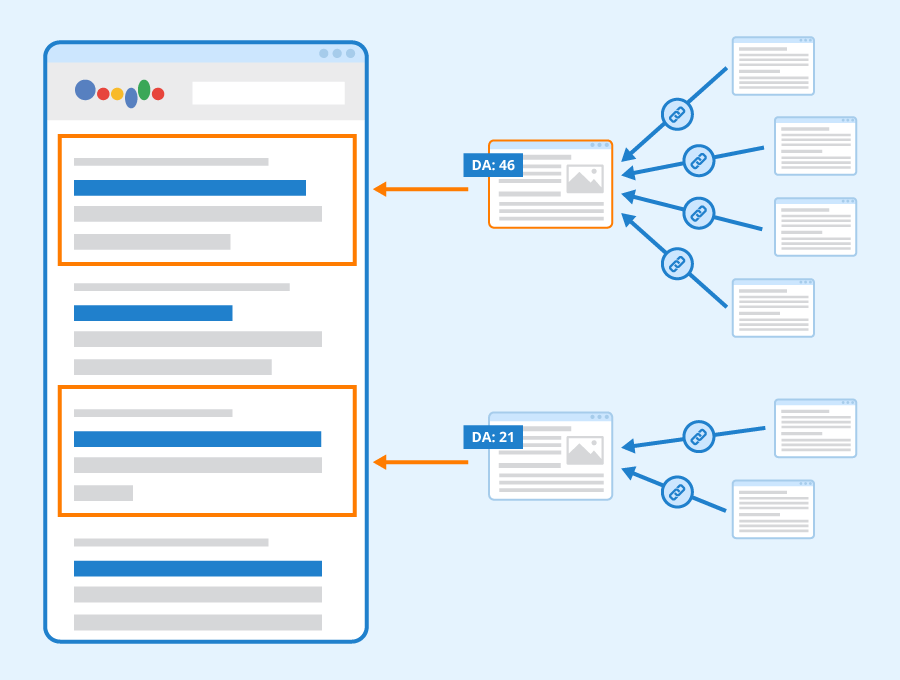
You can add these practices to your off-page SEO strategy to create dofollow links to your website.
- Create pillar contents and guides
- Guest blog on dofollow websites in your niche
- Create expert roundups
- Refer to your competitor’s do follow links
- Try broken link building on other websites
Create pillar contents and guides
Writing 10x content or pillar articles and how-to guides is a highly effective way to build dofollow links.
Subjects and guides which are relevant to search queries and answer everything related to the keywords attract more traffic and as a result, you can earn high-quality dofollow backlinks.
Guest blogging on do-follow websites
This is the most common way used to create dofollow backlinks. It requires a lot of homework on your part. You can write guest posts for websites that use dofollow links in the content.
You can search for such websites using some of the following keywords:
- Intitle: “write for us”
- Intitle: “write for me”
- Intitle: “contribute to”
- “Submit a guest post”
- “Guest post”
- “Guest post by”
- “Guest author
Once you find the links, you will have to manually inspect them to make sure the backlinks are dofollow.
Create expert roundups
An expert round-up is a blog post that features quotes and opinions of industry experts on certain topics. Ask an expert in your industry a question and record the response in the form of a featured article on your website.
You can then share the feature with the said expert and ask them to link back to the article from their website. They gain from this too as it publicizes them and their brand too. Typically they would agree. If they don’t, at least you asked!
Refer to your competitors’ Dofollow links
You can use Backlink Checker tools link Ahrefs, where you can find the data on backlinks of your competitor’s websites. Look for their dofollow links and see if you can acquire them too by contacting the web owners.
Broken link building on other websites
You can identify broken backlinks on other websites using Ahrefs or other SEO tools. You can reach out to these websites and offer to help fix the broken links and that way earn high-value dofollow backlinks to your website.
If you read my article on broken links and link-building as an SEO strategy, you can get a deeper understanding of the topic.
You can generally try the above-mentioned methods to create dofollow links. But if you have a fairly established authority in your niche as a brand, then I can give you a couple of more tips here.
Get interviewed
If you get interviewed on YouTube, podcasts, or for any blogs, you can get some dofollow links for your mentions. I am sure the interviewers would understand and appreciate the importance of dofollow backlinks in SEO!
Turn mentions into dofollow links
This is when others have mentioned you or your brand. You can convert these mentions into backlinks. Of course, you will have to ask the websites with the mentions whether they would add a dofollow backlink to your website.
To find out if you have been mentioned, you will have to Google yourself or your brand and find the websites that have mentioned you but have not linked the mentions to you.
There is also a fancy way to do this. You can set up Google alerts on your name/brand to monitor each time it has been mentioned and receive an email notification about it. Then you can check whether these mentions are linked.
How to know if a link is dofollow or nofollow?
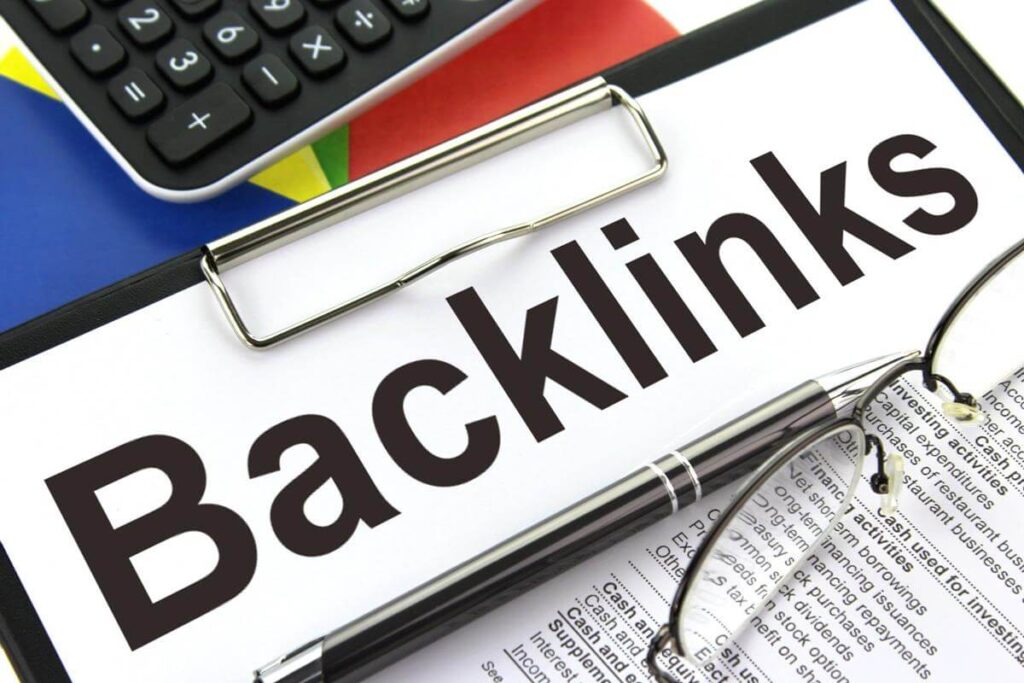
You will know if you take a peek into the HTML code of the browser. If it is not specified as no follow, then it is a dofollow link. To find the HTML code –
- Right-click on the link you want to check.
- Click on “Inspect” in the drop-down.
- Look for the anchor element tag like the image I I showed you above as an example.
- If the anchor element has the “rel” attribute assigned as nofollow, then the link is no followed. Otherwise, it is dofollow.
The rel attribute defines the relation between the current page and the linked destination page. Search engines use it to get more information about the link.
If the link is do follow then the search engine receives a signal to use the link for page ranking calculations.
You can also use dofollow link checker tools for the same. Some of the tools are:
- Dofollow link checker – a web-based tool that checks the entire page for dofollow and nofollow links
- Ahrefs backlink checker – Independent tool
- MozBar – Chrome Extension
- SEOQuake by SEMrush – Chrome Extension
- LinkAnalyzer by Coder Duck – Independent tool
When to use Dofollow and Nofollow links?

You can use the nofollow attribute when you do not want to associate your website with the sources you have linked out to.
But remember that you usually link to other sources to add value to your content or because they are helpful for your visitors, and you would not have a reason not to credit that link.
If it is not a link worth giving credit to, why link out at all?
On the other hand, if the sources are relevant and authoritative, then use dofollow. If you are doubtful about the authority or trustworthiness of a website, then it is safe to use nofollow.
The specific situations where nofollow links are usually used are:
1) Sponsored/Paid links: Online advertisements and links that have been paid for can be Nofollow. This is a newly included attribute by Google to prevent people from buying backlinks and playing with the system.
2) User-generated content (UGC): The comments sections and other forms of content which are “submitted” by users may include links.
- Bot-generated content and spam comments are very common in user-submitted content. These links are marked as “ugc” so they require less moderation on your part.
3) Embedded links: If you are using embedded content from third-party resources in your site, it is safe to nofollow them to prevent any issues that may connect to you through these third-party content, as you will not be having any control over them.
4) Unwanted endorsements: You can use nofollow if you simply do not want to associate yourself with the sites you are linking to or if you want to link to other sites without affecting their rankings.
Conclusion
A user that is passing by sees no difference in the link. It makes no difference whether it is dofollow or nofollow. But it all matters for SEO and search engines.
My suggestion is do not make it all about getting backlinks and ranking. Focus on creating useful, relevant content and make use of dofollow and nofollow naturally to link out to other resources.
That way you are providing value while at the same time not attracting penalties from Google.
Bottom line is that both are important for SEO and for building a healthy backlink profile. So, dofollow or nofollow, there is no question.
What do you think?
FAQs
What is the best ratio of dofollow and nofollow backlinks for your website?
Honestly, there is no right answer to this question, but based on Alexa Rank, a healthy nofollow-dofollow ratio is 25/75, with the dofollowed links dominating your backlinks. Just make sure there is natural link diversity.
It should not look like you are trying hard or stuffing backlinks for SEO purposes. Focus on getting relevant and quality backlinks.
Can nofollow links hurt your website?
You don’t have to worry about anything hurting your website if you are following Google’s guidelines. If you are not involved in creating spammy links, nofollow links cannot hurt your website.
You need to check that no spammy websites are linking out to you and that you get backlinks only from high-quality sources.
Does Google crawl nofollow links?
Google does crawl nofollow links. Though initially it was considered as a directive, a nofollow attribute is now a mere hint given by the webmaster to the search engine expressing the relation between their own website with the linked website.
It is not a mandate to prevent search engines from crawling it.
As of March, 2020, Google considers nofollow links for crawling and indexing. Therefore even nofollow backlinks from high quality sources can also be effective for your SEO campaign.


